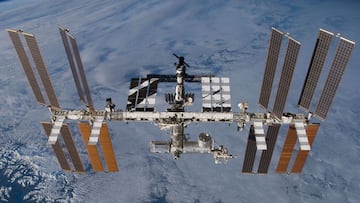SPACE
Where is the International Space Station? ISS facts and figures
The manned Boeing test flight is aiming to meet up with the space station orbiting our planet, one of aerospace’s msot recognisable constructions.

Zooming around our planet at 17,500 miles per hour, the International Space Station (ISS) is a marvel of human collaboration and engineering. But where exactly is it, and what’s it all about?
The ISS isn’t parked in a fixed location above Earth. Instead, it travels in a low Earth orbit, roughly 250 miles above the planet’s surface. This means its position is constantly changing as it circles Earth every 90 minutes, completing 16 orbits per day.
Due to this constant movement, the ISS can actually be seen from Earth with the naked eye under the right conditions – you can check for viewing opportunities in your area on NASA’s “Spot the Station” website.
Watch it again: Boeing’s Crew Flight Test mission to ISS
A global effort
The ISS is a truly international endeavor, operated by a partnership of five space agencies: NASA (United States), Roscosmos (Russia), JAXA (Japan), ESA (Europe), and CSA (Canada). Construction began in 1998 and continues today, with modules delivered by both American Space Shuttles and Russian rockets.
Since November 2000, it has been continuously occupied by a crew of seven astronauts and cosmonauts who live and work on board, conducting scientific experiments in microgravity and studying the effects of long-duration spaceflight on the human body.
A technical marvel
The ISS is a massive structure, stretching 356 feet (109 meters) end-to-end, which is just shy of the length of an American football field.
Its massive solar arrays, which provide power to the station, have a wingspan larger than the biggest passenger airplane!
Inside, the pressurized modules offer a surprisingly spacious living environment, with a volume larger than a six-bedroom house and featuring amenities like a gym, a 360-degree observation bay, and dedicated sleeping quarters for the crew.






